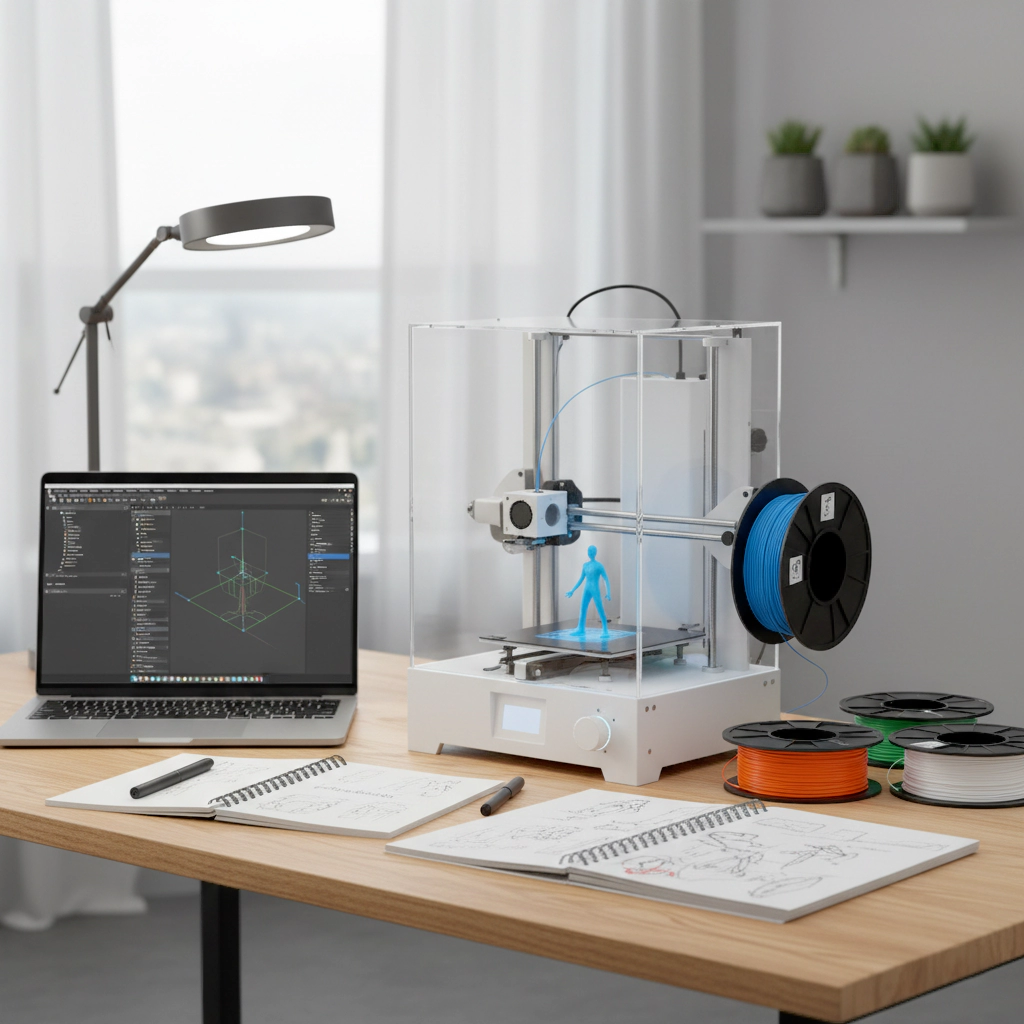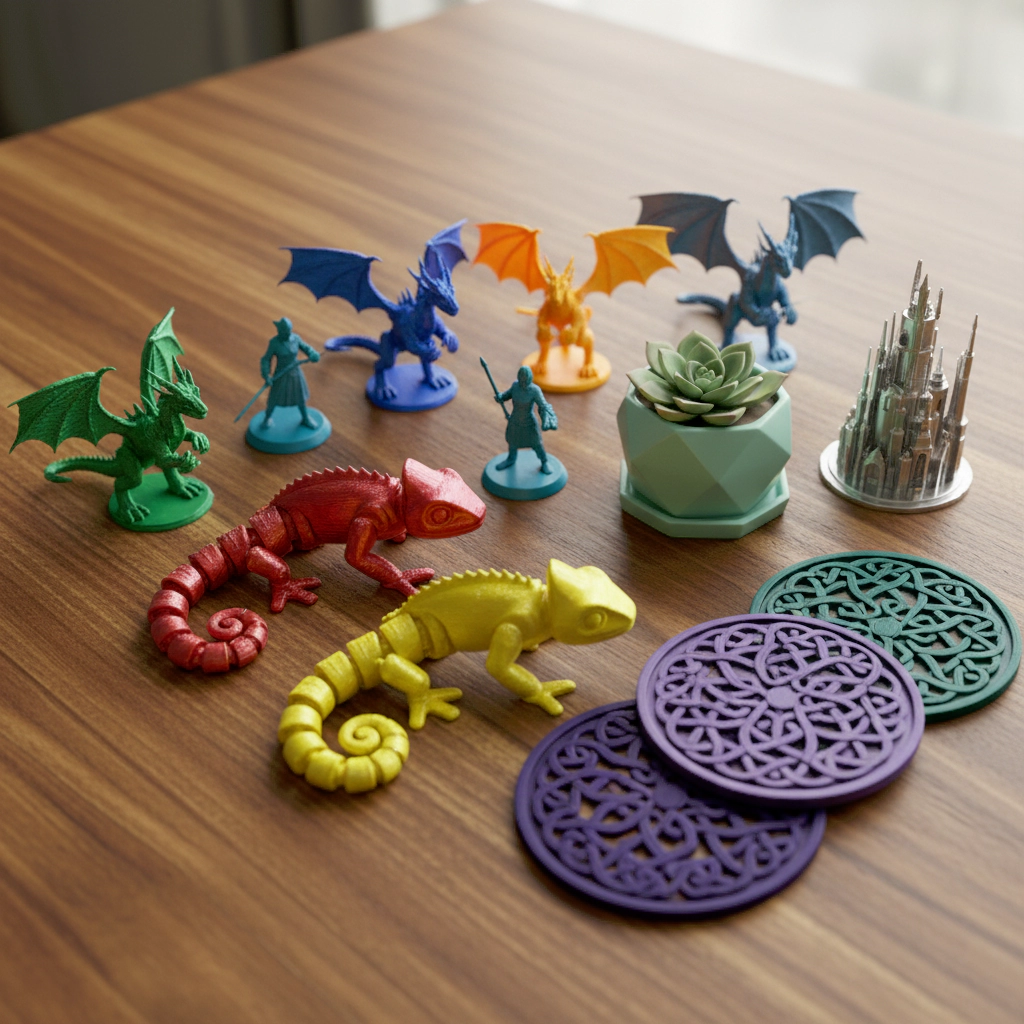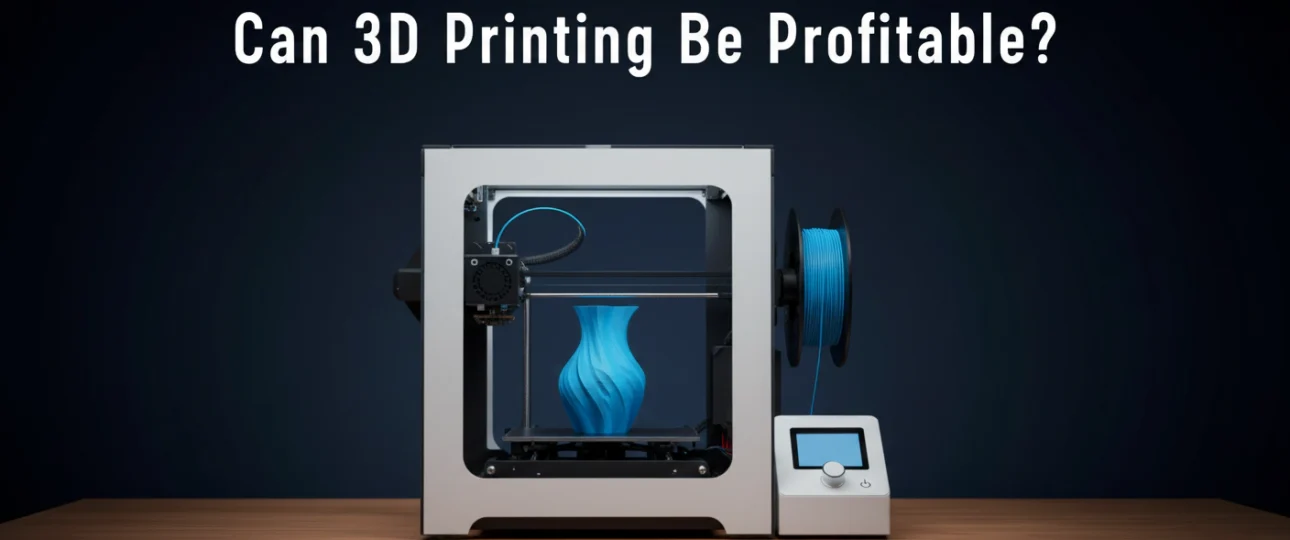Introduction: The Passion That Can Pay Off
You’ve probably watched a small plastic object come to life on a printer bed and thought, “Could I actually make money doing this?”
That curiosity is where most 3D printing journeys begin. What starts as a creative hobby testing materials, tweaking settings, and admiring the finished models can become a genuine source of income if you approach it strategically.
Today, 3D printing isn’t just for engineers or designers. You have the same access to powerful machines and open-source models as professional creators. The only question is whether you can transform your passion into profit and the answer might surprise you.
This guide will walk you through what makes 3D printing profitable, where the real money is, and how you can build a small business from your desk or workshop.
Table of Contents
Why 3D Printing Is Growing Faster Than Ever
If you’ve noticed more 3D printers showing up in homes, schools, and workshops, you’re not imagining it. The 3D printing industry has exploded over the last decade.
- The global 3D printing market is projected to exceed $50 billion by 2030, according to Statista.
- Affordable desktop printers now cost less than a gaming console.
- Materials and software are easier to access than ever before.
This growth means opportunity for you and thousands of creators who design, print, and sell unique items daily.
Popular uses of 3D printing today include:
- Custom phone accessories and tools
- Collectible figurines and miniatures
- Replacement parts for household items
- Jewelry, cosplay, and props
- Educational or prototype models
Each of these markets offers space for creativity and profit if you know how to position your products.

Is 3D Printing Profitable? Understanding the Real Numbers
The idea of making money with 3D printing sounds simple print something cool, sell it, repeat.
But profitability depends on how you manage your costs, time, and product value.
The Costs You Need to Know
Your first investment will always be your 3D printer. Prices vary depending on build volume, quality, and type (FDM, resin, or SLS). But that’s just the start.
Here’s a simple cost breakdown for running a small 3D printing operation:
| Expense Type | Average Monthly Cost (USD) | Notes |
|---|---|---|
| Printer & Maintenance | $200–$500 | Regular calibration, nozzle replacements |
| Filament or Resin | $100–$300 | Material varies by project type |
| Electricity | $50–$100 | Continuous printing can raise usage |
| Design Software | $0–$100 | Free options like Blender or paid tools like Fusion 360 |
| Marketing & Shipping | $100–$200 | For those selling physical prints |
At first glance, that might look like a lot. But once your setup is complete, most of these costs stabilize, and your profits begin to scale with volume and digital products.
Where the Profits Come From
There are several ways to earn money with 3D printing. Some creators specialize in digital designs (STL files), while others sell finished prints. You can also offer printing services to people who don’t own a machine.
Here are the most common revenue streams:
- Sell STL Files Online: Upload your original models to marketplaces like Cults3D, MyMiniFactory.
- Offer Printing Services: Print custom parts for local businesses or hobbyists.
- Create and Sell Products: Miniatures, toys, tools, or art pieces can sell well on Etsy or eBay.
- Freelance Design Work: Design models for clients in industries like architecture or engineering.
If you focus on digital products like STL files, your profit margin can reach 90% or more, since you don’t deal with shipping or material waste.

The Most Profitable 3D Printing Niches
Finding your niche is the difference between printing for fun and building a sustainable business.
When you know what sells, you spend less time guessing and more time creating what people want.
Top Niches That Perform Well
- Miniatures and Figurines – Always in demand among tabletop gamers and collectors.
- Home Decor – Stylish vases, lamps, or organizers with modern designs.
- Custom Gifts – Personalized nameplates, wedding decor, or keychains.
- Functional Prints – Tools, stands, or replacement parts that solve everyday problems.
- Cosplay Props – Masks, helmets, and armor are huge sellers in the entertainment niche.
Each of these niches has proven buyers and opportunities to build a brand.
Example: Turning Ideas Into Income
Let’s say you enjoy printing flexible toys. You could design and sell a Mini Animal Fidget Pack a collection of printable creatures that users download instantly.
Your upfront effort is in design, but every sale afterward is passive income. That’s the beauty of digital 3D printing assets.

How to Start a Profitable 3D Printing Business
Starting small is often the smartest way to build. You don’t need a full studio or industrial printer. What you need is a clear plan and consistency.
Step-by-Step Setup
- Choose the Right Printer – For beginners, an FDM printer like the Creality Ender series is affordable and reliable.
- Pick a Niche – Focus on one profitable category (e.g., miniatures or accessories).
- Create or Source Models – Design your own or license models for resale.
- Set Up Your Store – Use platforms like 3DSTLS.com, Etsy, or Shopify to sell.
- Promote Your Work – Share print videos, reels, and tutorials on TikTok or Instagram.
- Price Your Products Smartly – Consider material cost, time, and uniqueness.
Recommended Tools and Resources
- Design Software: Blender, Fusion 360, or TinkerCAD.
- Slicing Software: Cura, PrusaSlicer, or Lychee for resin printing.
- Marketing Tools: Canva for visuals, Buffer for social scheduling.
Your first few sales might take time, but once you build trust with your audience, growth accelerates quickly.
Tips to Maximize 3D Printing Profits
Even with a small setup, you can increase earnings by managing your workflow and promoting effectively.
Smart Pricing and Packaging
- Don’t race to the bottom charge for quality and creativity.
- Offer bundles or limited-edition STL packs to increase order value.
- Create printable collections around themes (e.g., “Halloween Props Pack” or “Superhero Figurines”).
Lower Your Operating Costs
- Buy filament in bulk or during sales.
- Optimize slicing settings to reduce print time and waste.
- Maintain your printer regularly to prevent failed prints.
Marketing and Branding Tips
- Record short, satisfying print timelapse videos.
- Build an email list with exclusive STL offers.
- Use high-quality photos on your product listings.
- Always include detailed product descriptions with clear keywords.
When people recognize your brand for reliability and creativity, they’ll return and that’s where true profit lies.
Common Mistakes That Reduce Profit
Even with enthusiasm, many beginners fall into traps that slow their progress. Avoiding these will save you both time and money.
- Underpricing your work. You might sell more at first, but long-term growth requires fair pricing.
- Using copyrighted content. Always check licensing before selling any model.
- Ignoring printer calibration. Poor print quality ruins customer trust.
- Neglecting marketing. Great prints won’t sell if no one sees them.
Running a profitable 3D printing business means treating it like a business track expenses, measure results, and always aim to improve.
Real Success Stories From 3D Printing Entrepreneurs
To see what’s possible, look at the makers who’ve already done it:
- Independent Designer on MyMiniFactory: Earns over $1,000 monthly selling collectible figures.
- Local Service Provider: Prints custom parts for small automotive workshops, making steady income each month.
- Digital Creator: Uploads premium STL packs on 3DSTLS.com and earns passive income from every download.
What they share in common is focus, patience, and the willingness to learn.
You don’t have to be an expert from day one. Most successful creators started by printing small, learning from mistakes, and reinvesting profits back into better equipment and designs.
Is 3D Printing Still Worth It in 2025?
Absolutely if you understand your market and plan strategically.
Pros:
✅ Low startup cost compared to traditional manufacturing.
✅ Unlimited design freedom and creativity.
✅ Global market access through online stores.
Cons:
❌ Time required to design and print.
❌ Competition from low-cost sellers.
❌ Technical learning curve for beginners.
But with consistency, smart branding, and quality output, 3D printing can be more than just a hobby it can be your side income or even a full-time career.
FAQs About 3D Printing Profitability
Can 3D printing really make money in 2025?
Yes. Thousands of makers already earn from selling STL files or custom prints. The demand for creative, unique, and personalized items keeps growing every year.
What’s the most profitable thing to 3D print?
Digital STL bundles, figurines, and cosplay props are among the top earners. Custom tools or décor also perform well depending on your niche.
How much do you need to start a 3D printing business?
Around $500–$1000 can get you started, covering the printer, materials, and setup. As you grow, profits can easily cover upgrades.
Is selling STL files better than selling physical prints?
Yes, because digital files bring passive income. Once uploaded, they can sell endlessly without extra costs.
Can you run a 3D printing business from home?
Definitely. Many successful 3D entrepreneurs work from a small desk or spare room using compact printers and online marketplaces.
Conclusion: Turn Your 3D Printing Passion Into Profit
You already have what it takes creativity, curiosity, and the drive to build.
The tools are in your hands; what matters now is how you use them.
Start small: print a few models, test your niche, and share your creations online. Over time, you’ll refine your designs, attract customers, and watch your side project evolve into something profitable.
Every profitable 3D printing journey begins with a single print yours could be next.

